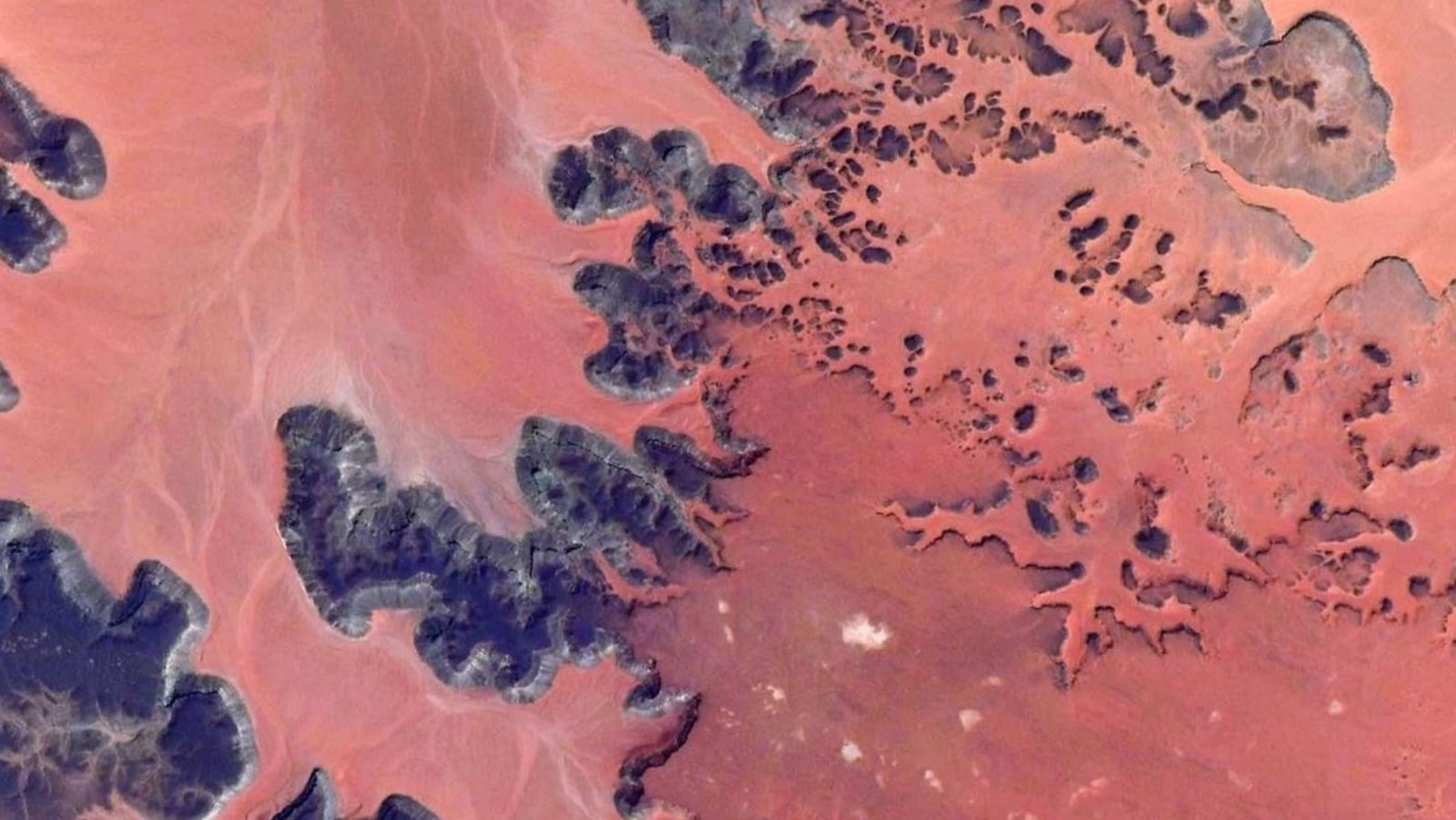Mars on Earth? 'Too hot to handle,' says Nasa; check out magnificent photo
A beautiful, but daunting photo of the Sahara Desert that looks exactly like Mars terrain was shared by Nasa after dubbing it as being 'too hot to handle'.

Nasa has just shocked and awed us all by sharing a magnificent photo that was captured by astronaut Shane Kimbrough, who is currently aboard the International Space Station (ISS). Take a close look at the picture above shared by Nasa. What do you see? Do you see a picture of our closest neighboring red planet - Mars? If you said yes, to the question, you'll be surprised to know that the actual answer is much closer to home. This is a picture of the Sahara Desert, and not the Red Planet. NASA shared this stunning photograph of Earth's largest desert, on one of it's latest posts on the official Instagram handle and captioned it as being, ‘Too Hot to Handle.'
Like the Mars environment, Nasa indicated that the Sahara Desert is one of the harshest places on our planet, the largest hot desert on Earth. The Space Agency says that satellite data revealed that “wind and weather in the Sahara pick up on average 182 million tons of dust from the deserts of Africa and carry it 1,600 miles across the Atlantic Ocean each year.” NASA put things in perspective by saying: “This volume is equivalent to 689,290 semi-trucks filled with dust.”
Also read: Looking for a smartphone? Check Mobile Finder here.
Nasa also explained what the impact is on countries where this debris flies to. It said, “This dust helps build beaches in the Caribbean and fertilizes soils in the Amazon. It affects air quality in North and South America.” It may also play a hand in the “suppression of hurricanes and the decline of coral reefs” the note added.
To give further perspective about the desert, here are some figures and facts. The desert is roughly about 3.6 million square miles (about 9.2 million square kilometers in metric) of nothing but dry-arid land located in the northern part of the African continent. According to Nasa, it is only “slightly smaller than the continental United States.” The highest temperature ever recorded here was 58 degrees Celsius, and the lowest was -36 degrees.
The daunting image by NASA evoked a wide range of emotions amongst viewers, and they expressed the same in the comments section. One user said, “And knowing this is on earth, just incredible.”
Recent Nasa research however, indicated that less amounts of Saharan dust would be carried by the winds in the future. As per a report released in April 2021, Nasa said that “scientists, using a combination of satellite data and computer models, predict that Africa's annual dust plumes will shrink as a result of climate change and ocean warming.” With projected global warming, the research team used model data from the Coupled Model Intercomparison Project 5 (CMIP5) that indicate at least a 30% reduction in Saharan dust activity from current levels over the next 20 to 50 years, and a continued decline beyond that. The study was carried out in the aftermath of the June 2020 dust plume dubbed “Godzilla” that traveled from the Sahara to North America, across the Atlantic Ocean.
However, there are negatives involved with this flying dust too. According to Hongbin Yu, an atmospheric researcher at Goddard institute, the increase in nutrients that the dust causes, can lead to harmful algal blooms off the coast of Florida, and coral reef illnesses and death linked to dust deposition.
Catch all the Latest Tech News, Mobile News, Laptop News, Gaming news, Wearables News , How To News, also keep up with us on Whatsapp channel,Twitter, Facebook, Google News, and Instagram. For our latest videos, subscribe to our YouTube channel.





























